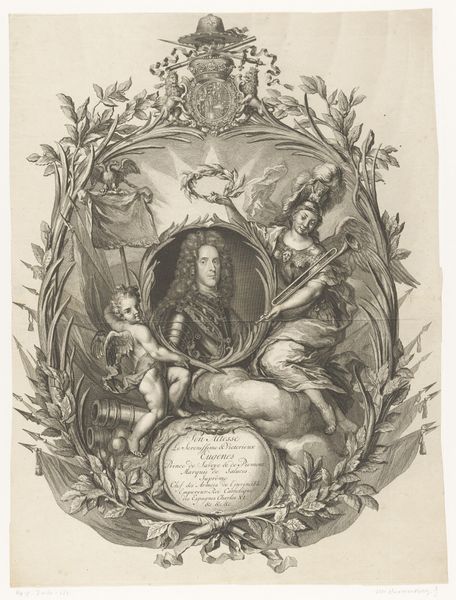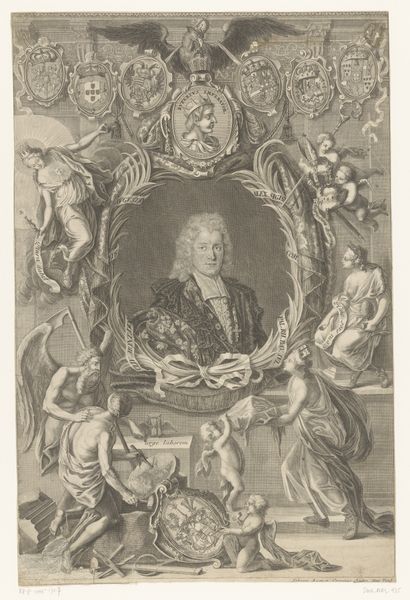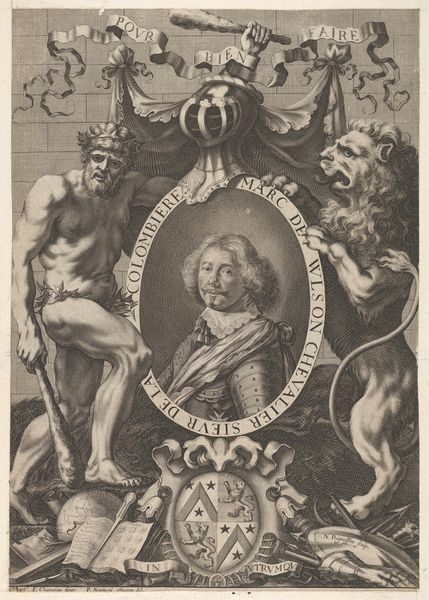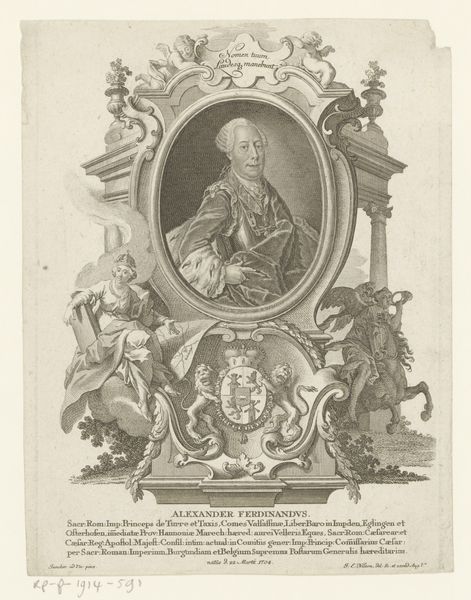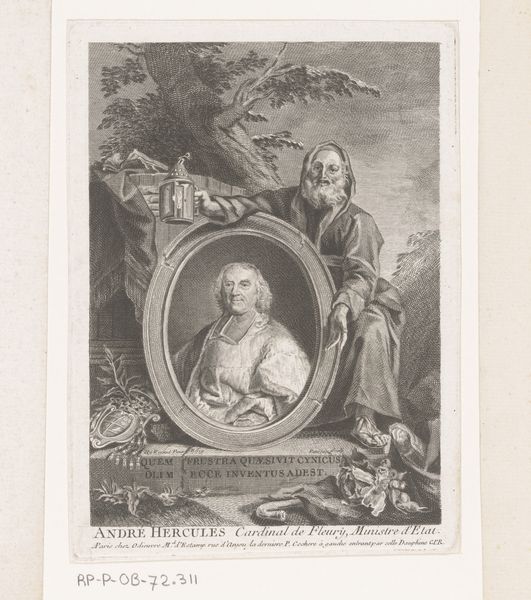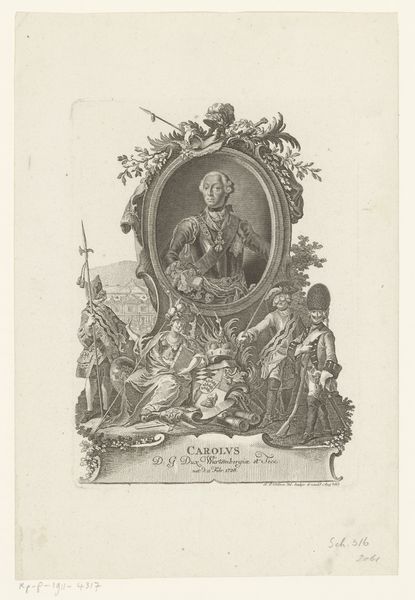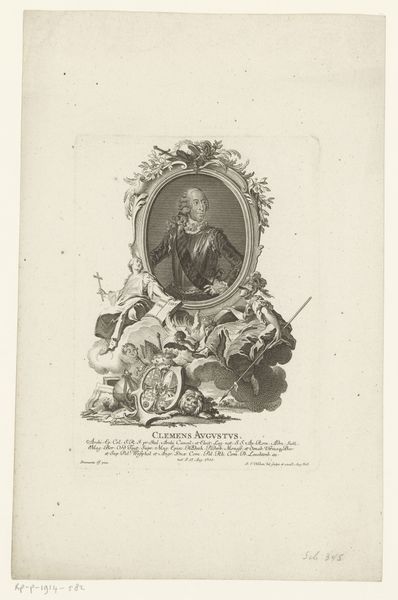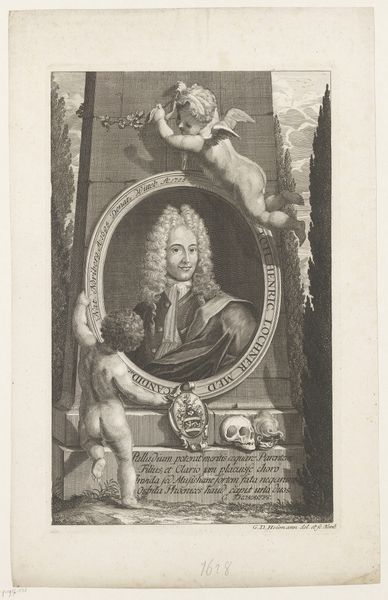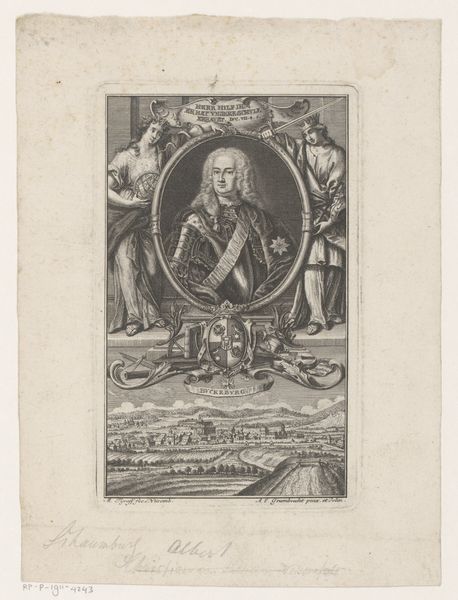
graphic-art, engraving
#
portrait
#
graphic-art
#
baroque
#
old engraving style
#
engraving
Dimensions: height 237 mm, width 177 mm
Copyright: Rijks Museum: Open Domain
Curator: Welcome to this gallery showcasing graphic arts. This engraving, dating between 1735 and 1779, presents a portrait of Karl Thomas Löwenstein-Wertheim-Rochefort by Martin Tyroff. Editor: What strikes me immediately is the opulence, the density of symbols surrounding him. It feels like a statement of power. Curator: Precisely. Engravings like these were often commissioned by the aristocracy. The portrait itself is contained within an oval frame, adorned with leaves, weaponry, and allegorical figures, designed to communicate status. Editor: Absolutely. The crown above his head and the lion at the bottom, clutching a shield, feel almost like ancient heraldry, symbols of nobility. Also, the globe reminds me of global power, knowledge and dominance. What exactly would these emblems signify about Löwenstein-Wertheim-Rochefort in that era? Curator: Well, each element speaks to his lineage and influence. The weaponry and flags symbolize his family's military history and sovereign authority. The ornate details would underscore his cultivated image. These prints often served as visual propaganda, circulated to affirm and enhance a family's position in the eyes of the public and other nobility. It's an example of baroque ostentation that tries to solidify the position of a family and celebrate its legacy through portraiture. Editor: So it’s as much about curating an image as capturing a likeness. You're reminding me about the power of image-making in legitimizing authority during that period. It’s interesting how meticulously constructed these 'snapshots' really are! They truly invite one to consider the legacy this individual wished to pass onto others. Curator: Indeed. Looking closely, one can discern not only a likeness of Karl Thomas but also a detailed illustration of the ideals and values he and his family wished to promote. It’s about embedding himself and his legacy within the visual culture of the time. Editor: And as we analyze these embedded visual cultures, the more we unravel these symbolic connections, the better we can appreciate how portraiture of nobility became embedded within society and how it continues to influence the projection of identity today.
Comments
No comments
Be the first to comment and join the conversation on the ultimate creative platform.
